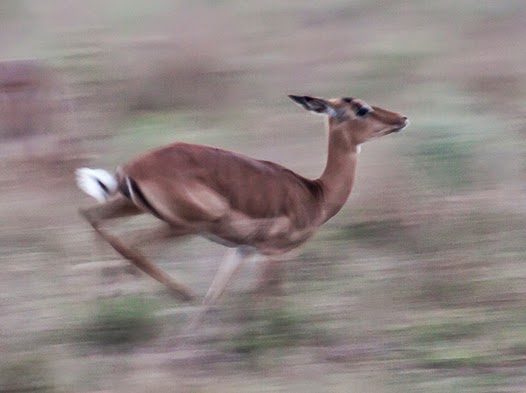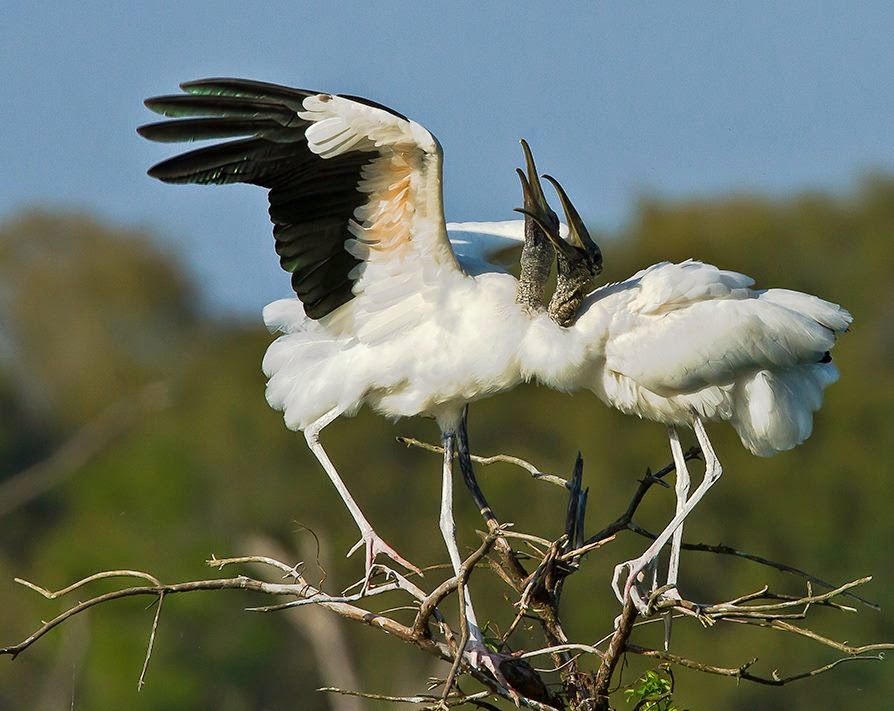I got up before dawn on my second day in Phnom Penh and went
out to explore the area around the hotel. The structured and guided
part of our two-week tour would begin a few hours later, but I wanted to be a
blank slate for first impressions.
The Villa Langka hotel is in a compound on a quiet street a
couple blocks south of busy Sihanouk Boulevard. Following Sihanouk to the east
brought me past a large monument and statue of King Norodom Sihanouk, the long
time leader of Cambodia who is credited with liberating the country from France in
1953. The statue looks to the east over a long park that even at first light
was filled with people walking, working and playing.
 |
| Sihanouk statue faces east |
 |
| Peeling lotus buds |
An old woman sat on the ground, wearing both a red and white
krama and a floppy hat on her head.
She was peeling the outer petals of lotus buds. People buy the peeled lotus buds
to present as offerings when they visit temples to pray. The woman noticed my
presence and my camera and just kept right on doing what she was doing.
The
Cambodian people generally don't see anything remarkable about Caucasians
pointing cameras at them. I didn't feel like anyone was any more curious or
surprised by my being there than by anyone else. Other than not being able to
speak their language, I felt like a part of the landscape. For a photographer, that's a good thing.
In another park, a couple dozen young men wearing white
karate uniforms practiced their martial art under the guidance of their
instructors. Further along small groups of middle aged women performed
guided aerobics.
All of that was interesting, but I think I learned more
about Cambodian culture from observing the morning traffic.
Traffic
in Phnom Penh is a miracle. I saw only 3 stop lights in this city of 2.2
million people, and no stop signs or yield signs. At first glance it appears to
be total chaos. And yet cars, trucks, buses, motor scooters and bicycles
co-exist and flow together like water, yielding without yelling, merging mildly.
Even pedestrians manage to cross the street, stepping carefully but confidently
into the stream, which flows around them easily. Eventually I learned to do
that, too, although Phnom Penh would never be described as a
pedestrian-friendly city!
It
is impossible to imagine road-raged American drivers getting around Phnom Penh,
and it is equally impossible to imagine the easy-going Cambodians surviving the
insanity of American urban traffic. Maybe the average Cambodian driver is just
a good Buddhist who accepts life on life's terms, on the street as in the rest
of his life. Or maybe in the absence of traffic controls people rely on their
good nature rather than the rules of the road. It probably also helps that the
vast majority of the vehicles are relatively slow, highly maneuverable motor
scooters.
 |
| Golden Buddha |
I
can only speculate, of course, about whether Phnom Penh traffic is a reflection
of the city's collective Buddha nature, but there is no question about the role
of religion in the general life of the city.
 |
| Temple stupas in Phnom Penh |
Throughout the city, huge
temple complexes, dominated by stupas (towers)
beckon the faithful to prayer and meditation. A thriving free market sprawls
inside and outside the temple walls, offering Buddha statues, prayer sticks
(incense), lotus buds, live birds and various trinkets to present as offerings to larger
Buddha statues within .
I
had long had a perception of Buddhism as a philosophy of simplicity, humility
and transcendent grace, and in those ways quite different from the way some of
the more ostentatious Western religions are practiced. But the huge temples
with their golden spires and prayer halls filled with likenesses of Buddha
rival anything I have seen in Christianity's cathedrals, and both stand in
stark contrast with the poverty of the people who live nearby.
I do not intend to diminish in any way the core
message of the Buddha (or of Jesus, Moses, Mohammed or any other founding
prophet). The dogmas and icons that have developed since those prophets passed
on have done more to obscure their messages than anything I could do or say.
 |
| Buddha with offerings |
 |
| Praying in the temple |
In
any case, it is clear that Buddhism plays a major role in the life of modern
Cambodia, and perhaps even more so in light of the fact that less than 40 years
ago, the Khmer Rouge destroyed or heavily damaged most of the country's
temples. So the rebuilt magnificent structures one sees today are monuments to the
peoples' need for spiritual centers, a resurrection, if you will, from the hell
of the Khmer Rouge and their effort to eradicate all of Cambodia's cultural heritage.
While
faith-based commerce thrives around the city's wats, secular commerce is
centered in the markets, especially the Central Market and the Russian Market.
After
spending that first morning traveling to the Royal Palace and its soaring
pagodas and then to several temples, we rode in cyclos to the Central Market.
Cyclos are sort of like rickshaws, but the driver pedals the
vehicle from behind the passenger seat, which is decidedly safer for the driver
than the passenger. It's a great way to experience Phnom Penh's traffic.
 |
Shoe Store in the Central Market |
The
entrance to the Central Market is startlingly art deco, having been built by
the French in 1935. Although lined with the typical stalls you'd find in most
Asian markets, it offers some of the feel of a modern shopping mall until after
you've passed through the large foyer. Then it becomes as narrow and
claustrophobic as you could hope for. And fun.
Shops are tiny stalls offering fresh food, cooked food, live
chickens, live fish, t-shirts, scarves, jewelry, electronics, shoes, Buddha
statues, dresses, pants, socks, hats and spices, among other things. We went
first to the food, since it was lunch time and we were hungry after a morning
of temple exploration. We ordered from one of the vendors cooking to
order. We found a counter some distance from the vendor, but they brought our
food, and then let us come back to pay after we had eaten.
 |
| Lunch Counter at the Market |
After lunch, we split up and wandered the aisles for photos
and shopping. Most of the vendors are not aggressive, but as soon as you look at
something more than casually, they will begin to negotiate. I
looked at some green stone elephants in one stall and asked how much. The price was
ridiculously low, so I asked, "Jade?"
"Yes?"
"Real jade?"
"No."
I got the price down from $10 to $6 for the fake jade
elephant and was satisfied. I might not have bought it at all, but the woman was honest, right?
 |
| Typical Market Stall |
The following day, we hit the Russian Market for lunch. The
Russian Market is more of what you expect in Asia, definitely not Art Deco. On the inside were many dozens of the same kinds of shops. The biggest
difference from the Central Market was a large array of tools, motor parts and other hardware, sort of the
Home Depot of Phnom Penh. But unlike Home Depot, these items are sold by small vendors all
competing with each other. Some specialize. One guy
might be selling nothing but wheels, and another nothing but engines. Others
are doing repairs.
 |
| Pedicure at Russian Market |
Shoppers can also get their hair washed or a pedicure when
they need to take a break.
One of the great things about Ralph Velasco's photo tours is
that he allows plenty of free time so we can explore on our own or in small
groups. But we all somehow ended up spending a lot of our free
 |
| Praying by the river |
time in a large
public park between the walls of the Royal Palace and the Tonle Sap River --
actually, where the Tonle Sap merges with the mighty Mekong.
This place is ongoing carnival. Saffron-robed monks
amble along serenely, while children beg their parents to buy sweets offered by wandering vendors carrying their goods on their heads. Other vendors
carry cages with live sparrows that people buy and hold as they pray, then
release, perhaps releasing their troubles at the same time.
 |
| Practicing sei dak |
School children rest on their book bags as men practice sei dak, a popular form of volleyball
played throughout Southeast Asia, and better known as takraw. Unlike
volleyball, the small ball is made of woven rattan, and players can touch it
with pretty much any body part except
the hands. This results in amazingly athletic contortions and ball control that
looks impossible.
In addition to lunches at the markets and included breakfast
at our hotel, we ate dinner at some very nice Phnom Penh restaurants. There is
a large enough foreign contingent of tourists, business people and NGO workers
to support some very upscale restaurants, where prices are anything but upscale
(except by Cambodian standards).
Our other major visits in the Phnom Penh area were to Silk
Island and two memorials dedicated to the victims of the Khmer Rouge regime.
I'll cover all of those in subsequent blog posts about Cambodia.
 |
| Silver Pagoda at the Royal Palace |



















































